Porsche 911 (1963 – 1973) Story & History
F-Body – The 1st Generation Porsche 911
Premiere: 1963 September 12 at the IAA Frankfurt motor show
As the Porsche 356 had been for sale for quite some time and considering it takes years for a completely new car to evolve from an idea to production, the plans for the successor of the 356 were laid in 1957-1958. A decision was taken to develop a completely new sports car. As the last 356 body was called T6, the new prototype was called simply T7. Ferry Porsche had given the team a clear brief: “The same dimensions as the 356 plus at least 20 cm longer wheelbase for more legroom, and a long, flowing rear end”. Different designs were considered for T7, all called as type 695.

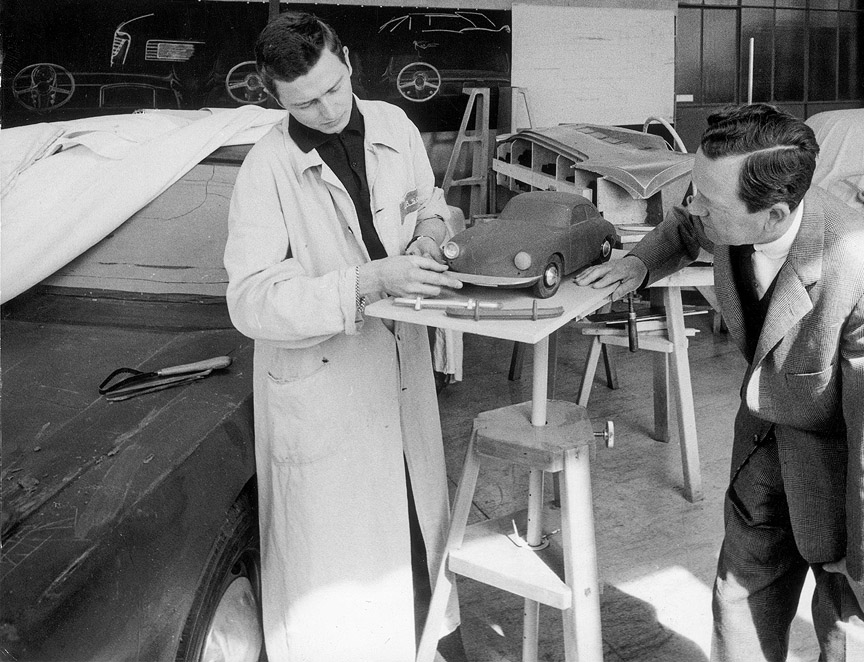

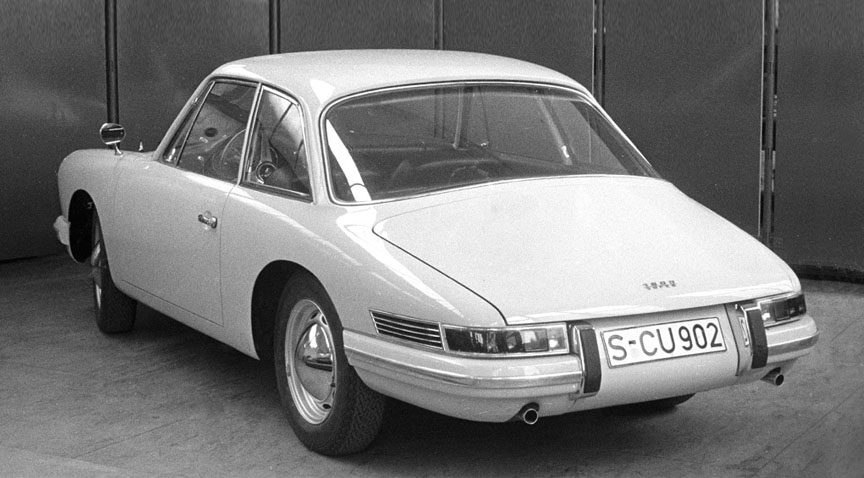

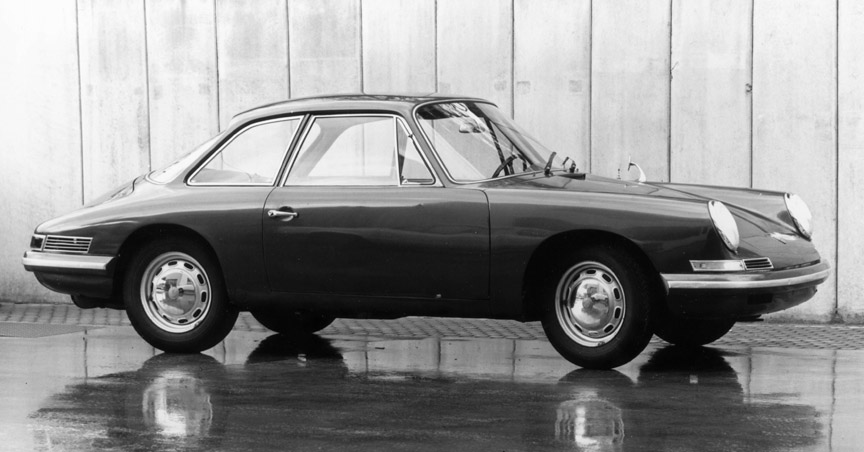
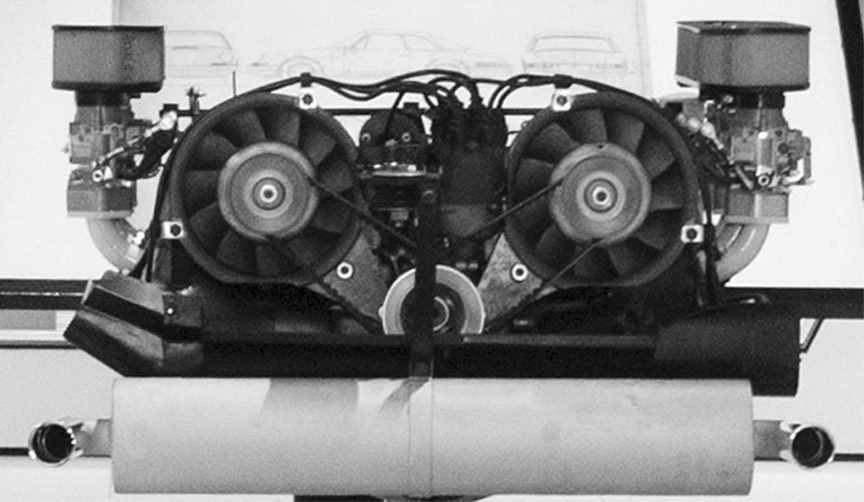
In December 1961 Ferdinand Alexander Porsche proposed the final design for the new car, internally called T8. The type number assigned for the future production car was 901.
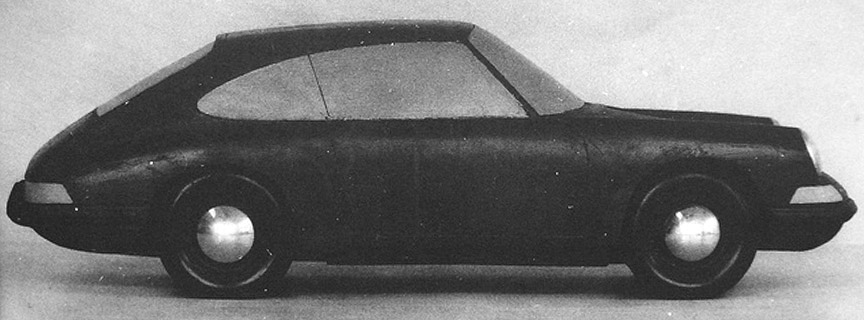
Although the 5-digit chassis numbers were discontinued for 356 after model year 1958 and 6-digit numbers were used since model year 1959, the early 901 prototypes used 5-digit chassis numbers. The first 901 prototype beared chassis number 13321. The later prototypes used the 6-digit chassis numbers of the production cars, starting with 300001. The 13321 body was built in September 1962.
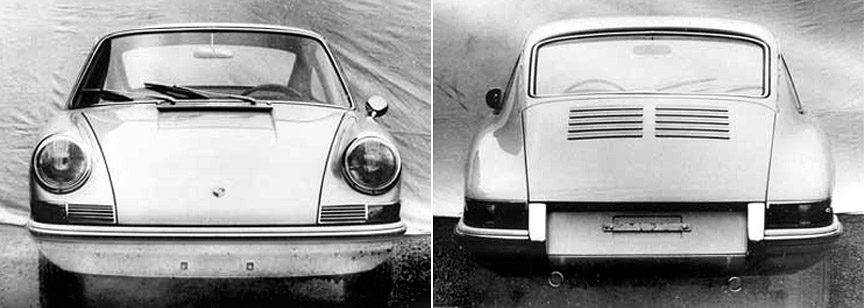



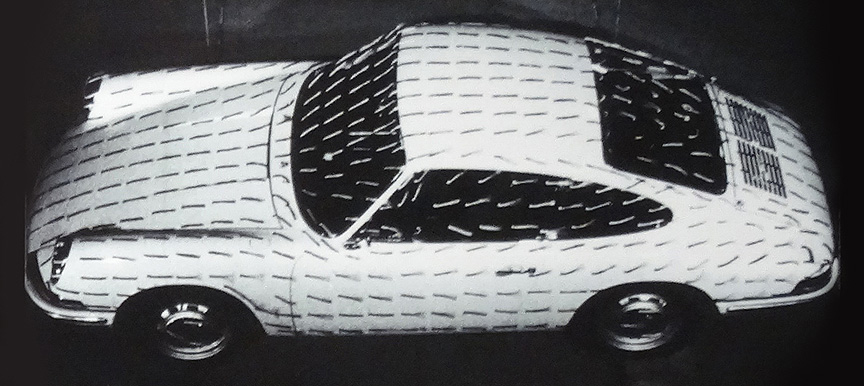



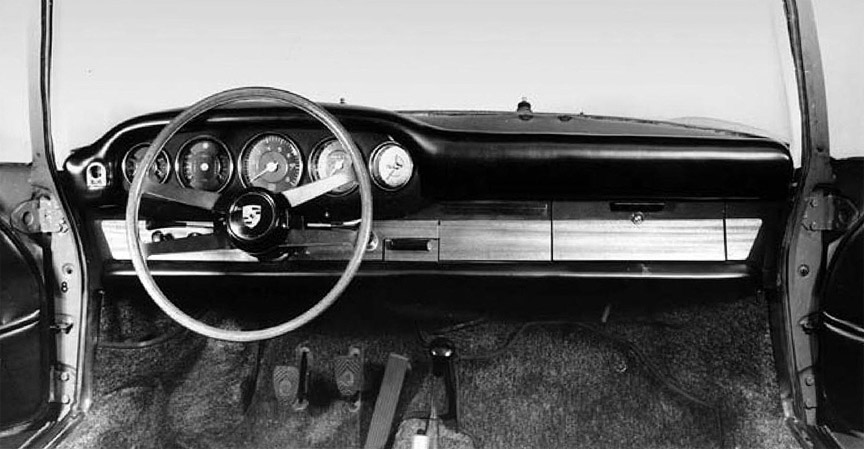
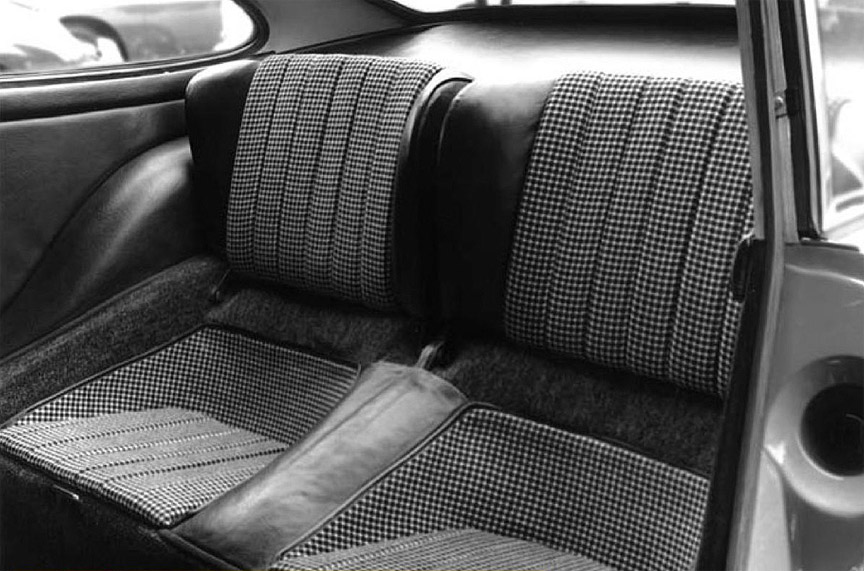
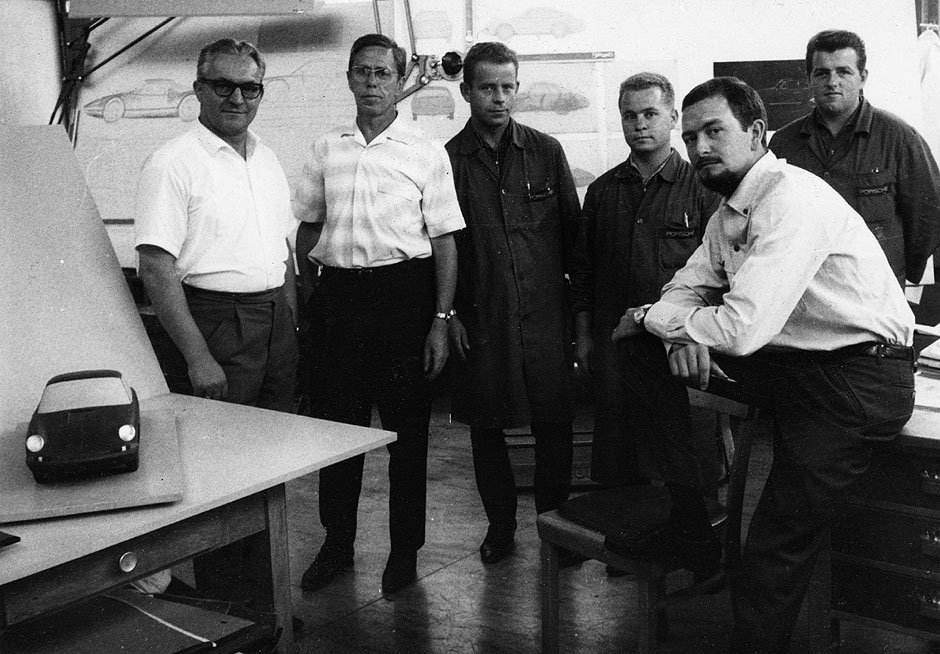

At last, but at the same time maybe too early, the Porsche 901 was introduced at the IAA Frankfurt on September 12, 1963. The 901 was 120 mm / 4.7″ longer, but 70 mm / 2.8″ narrower than the 356C. As the new car was more sophisticated, the weight went up around 100 kg / 220 lb.
The official 901 specs in September 1963 were as follows:
2-litre flat-6 and 5-speed gearbox
Length 4135 mm / 162.8″, width 1600 mm / 63.0″, height 1273 mm / 50.1″, wheelbase 2204 mm / 86.8″
Brakes 227 mm front, 243 mm rear
Wheels 4.5×15, tyres 165R15
Fuel tank 68 L / 18 US gal / 15 Imp gal.
Fuel consumption 11-14 L/100 km / 17-21 miles/US gal. / 20-26 miles/Imp gal.
Top speed 210 km/h / 130 mph
Acceleration 0-100 km/h 9.1 sec., 0-160 km/h 21.9 sec.,1 km from standing start 29.9 sec., 1/4-mile 16.4 sec.
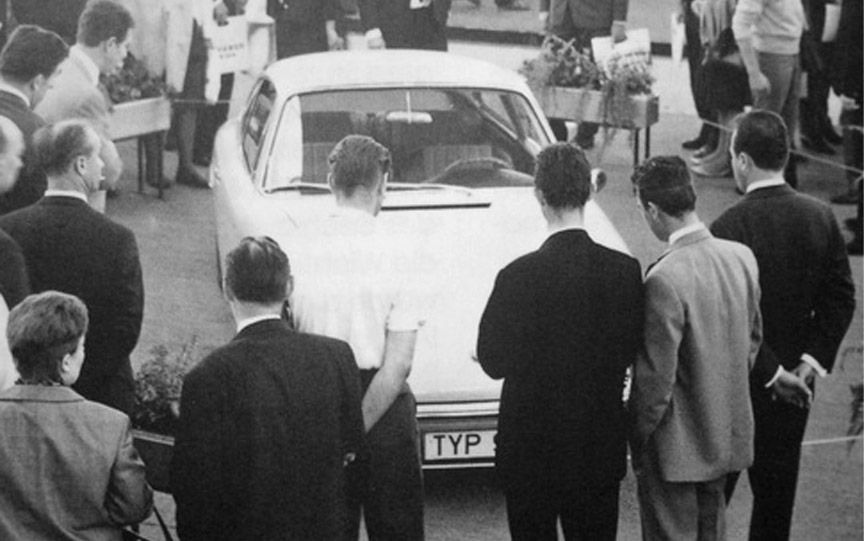

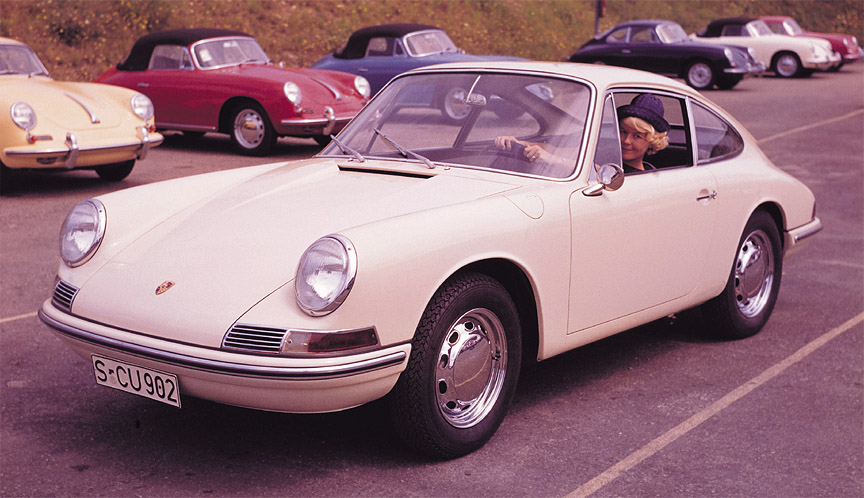
Sportscar prices 1963 October 1 (ADAC Motorwelt magazine)
| Engine | Power kW | Top speed mph | kmh | Weight kg | lb | Price DM | |
|---|---|---|---|---|---|---|---|
| MG B | 1.8 I4 | 70 | 118 | 190 | 11400 | ||
| Glas 1300 GT | 1.3 I4 | 55 | 106 | 170 | 11.600 | ||
| Triumph TR4 | 2.1 I4 | 74 | 109 | 175 | 11.990 | ||
| Porsche 356 C | 1.6 B4 | 55 | 109 | 175 | 14.950 | ||
| Porsche 356 SC | 1.6 B4 | 70 | 115 | 185 | 16.450 | ||
| Facel Vega III Cabriolet | 1.8 I4 | 79 | 112 | 180 | 16.500 | ||
| Austin-Healey 3000 | 2.9 I6 | 97 | 115 | 185 | 16.780 | ||
| Volvo P1800 S | 1.8 I4 | 79 | 106 | 171 | 18.300 | ||
| Lotus Elan 1600 * | 1.6 I4 | 81 | 115 | 185 | 585 | 1290 | 19.500 |
| Mercedes-Benz 230 SL | 2.3 I6 | 110 | 124 | 200 | 20.600 | ||
| Porsche 356 Carrera 2 * | 2.0 B4 | 96 | 131 | 210 | 1010 | 2227 | 23.700 |
| Porsche 901 * | 2.0 B6 | 96 | 131 | 210 | 998 | 2200 | 23.900 |
| Lancia Flaminia Sport | 2.8 V6 | 103 | 124 | 200 | 26.850 | ||
| Jaguar E-type | 3.8 I6 | 195 | 155 | 250 | 27.000 | ||
| Alfa Romeo Giulia Sprint Speziale | 1.6 I4 | 85 | 124 | 200 | 30.000 | ||
| Alfa Romeo Giulia GT Zagato * | 1.6 I4 | 99 | 152 | 245 | 610 | 1345 | 33.000 |
| Maserati 3500 GT | 3.5 I6 | 173 | 146 | 235 | 39.900 | ||
| Jaguar E-type Competition * | 3.9 I6 | 221 | 174 | 280 | 980 | 2161 | 48.000 |
| Ferrari 250 GT Berlinetta | 3.0 V12 | 184 | 149 | 240 | 49.800 | ||
| Aston Martin DB5 * | 4.0 I6 | 207 | 149 | 240 | 1100 | 2425 | 56.000 |
| Ferrari 400 Superamerica | 4.0 V12 | 250 | 178 | 287 | 78.000 | ||
| Ferrari 250 GTO * | 3.0 V12 | 222 | 174 | 280 | 960 | 2116 | 80.000 |
* noted as GT cars with racing suitability
The production of the 901 started a year after the unveil in Frankfurt. For the production car the wheelbase was extended by 7 mm (from 2204 to 2211 mm). On November 2, 1964, the 901 was renamed to 911 due to Peugeot’s claim that in France they own copyright already for decades for trademark with 3 digits and zero in the middle. Peugeot had the rights for this reservation in France only, but Porsche decided to change the number to be able to sell the car in all markets with the same abbreviation.
The chassis numbers up to 300048 were used on 901s and numbers starting with 300049 were used both on 901 and 911. There is a known 901 with 300080. The designation change happened overnight. The reason some 911s have chassis number smaller than some 901s, is that the chassis number was stamped on the body when it was made, but the designation was given when the particluar car with its ordered equipment was finished. Some bodies stayed longer in the factory than the others and that’s the reason for this “mess” with the 901/911 chassis number sequence.
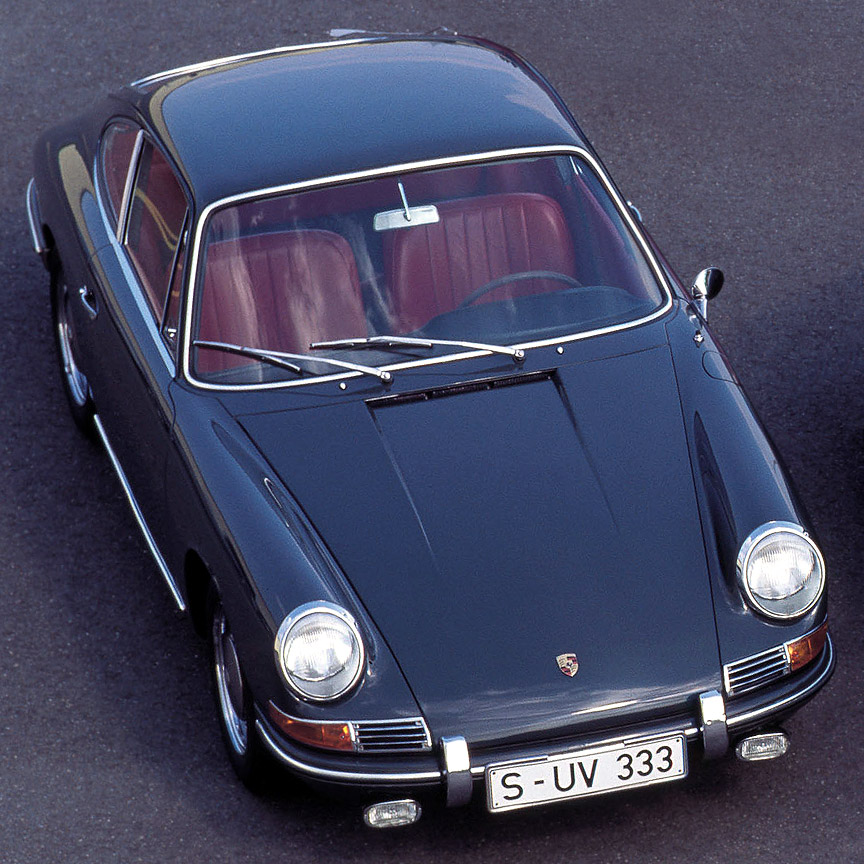
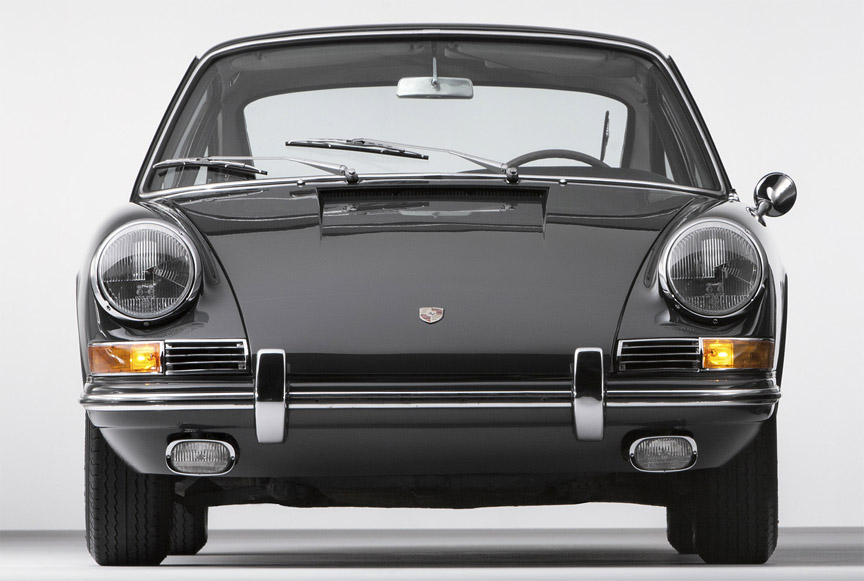

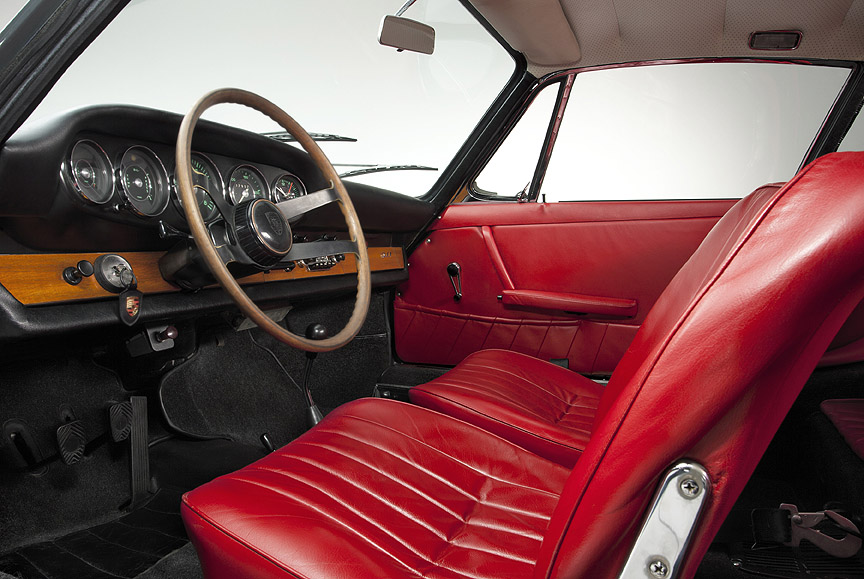

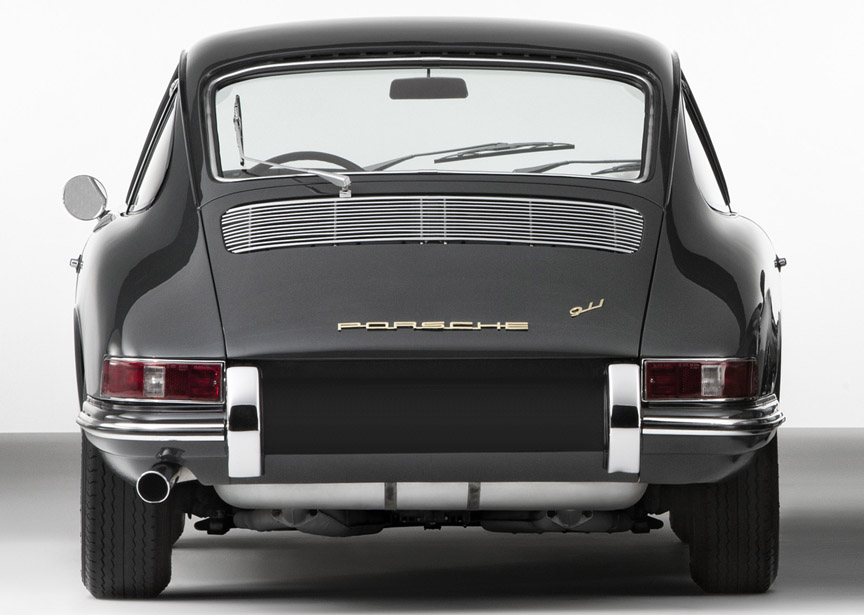





After the production of the 911 had started, the 912 followed soon after. The last model year for the 356C was 1965 and 912 took it over from there from model year 1966. The engine in the 912 is the same unit that was used in 356C. The 4-cylinder version of the 911 was called 902 during its prototype stage and renamed 912 for the production car. When the 2-litre 6-cylinder 911 was capable of doing 210 kmh / 130 mph, the 1.6-litre 4-cylinder 912 was capable of a good 185 kmh / 115 mph.
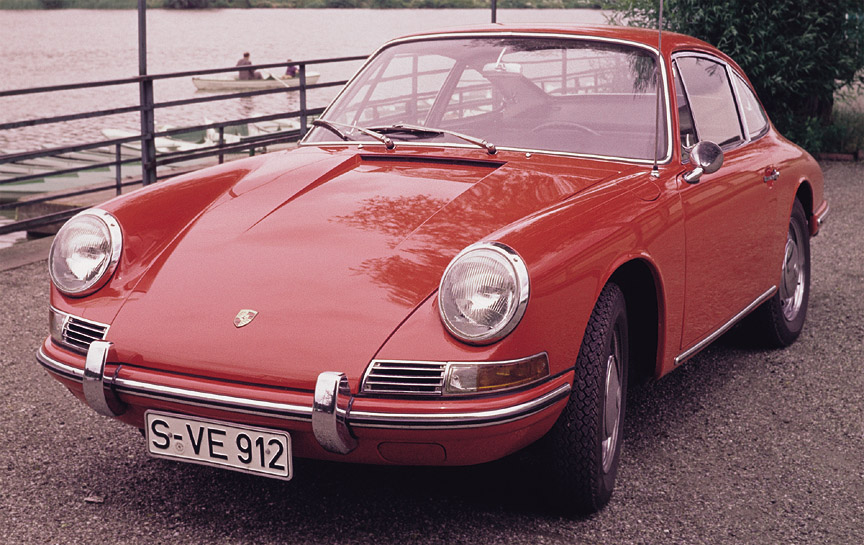
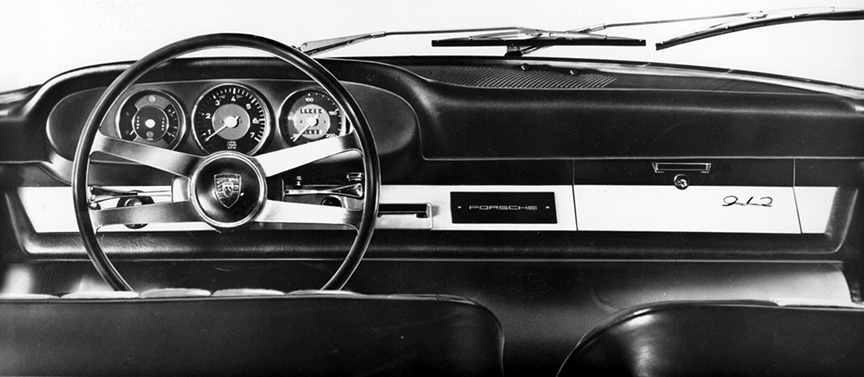



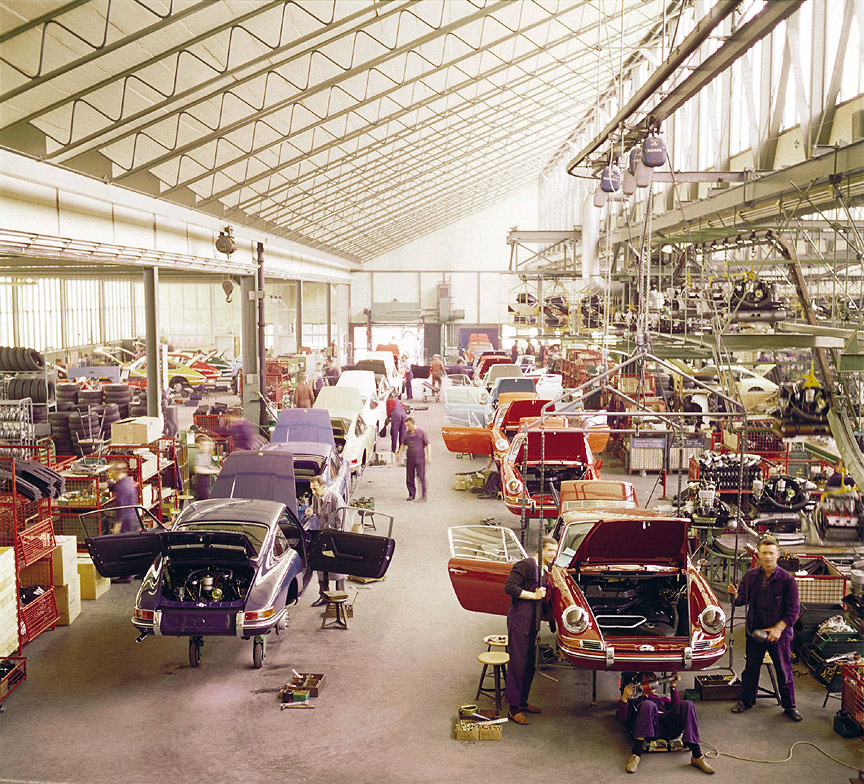
Since the production of the 356 C Cabriolet ceased in 1965, there was no open top Porsche available.
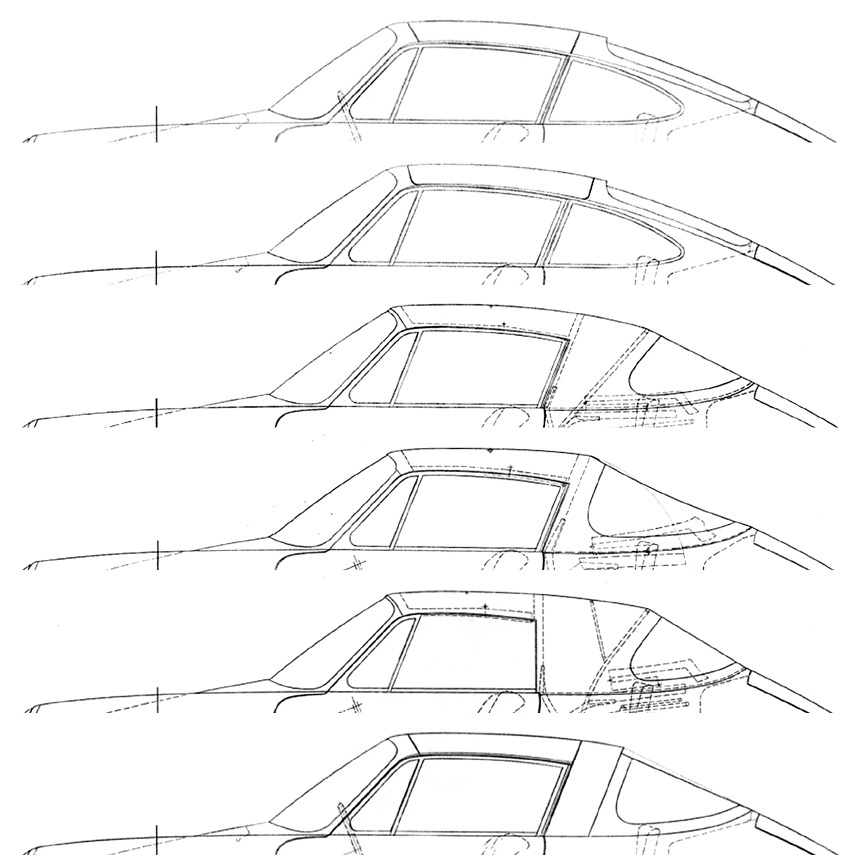

Although the 901/902 Targa prototype was there already in 1964, Porsche was busy starting the production of the coupé. The Targa prototype was shown in Frankfurt in September and in Paris in October, 1965, but the buyers had to wait still.
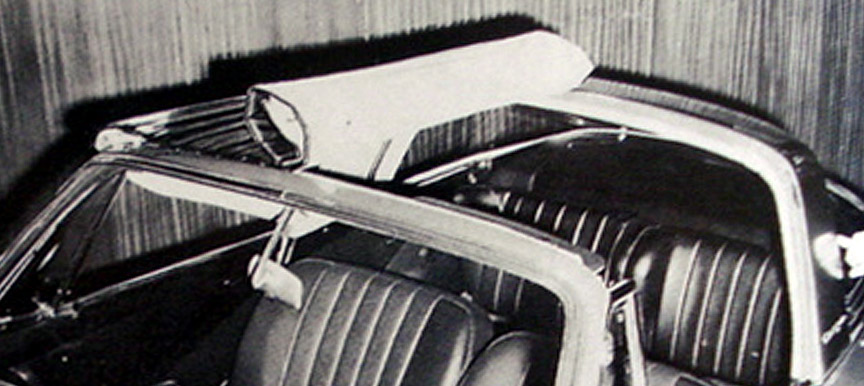
In 1966, for model year 1967, the 118 kW 911 S was created. It got internally vented disc brakes and forged aluminium Fuchs wheels.

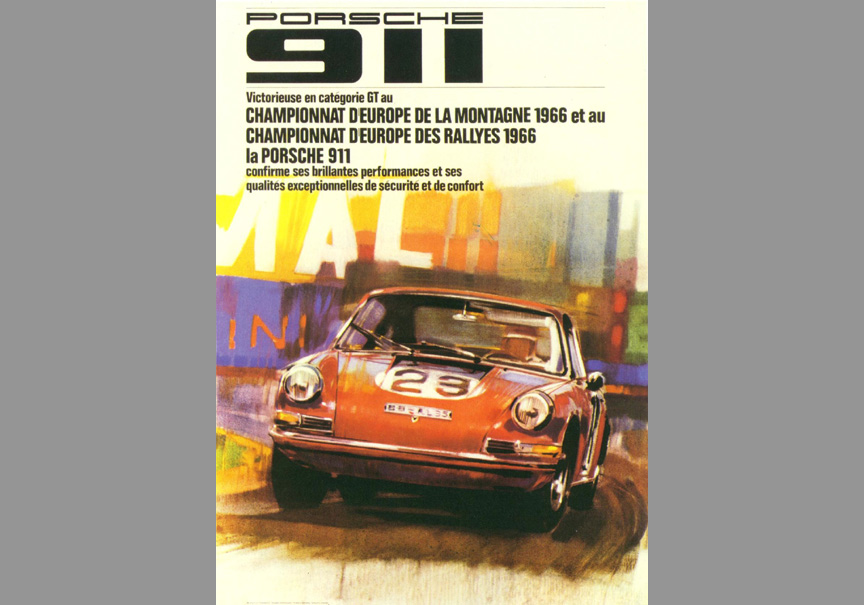
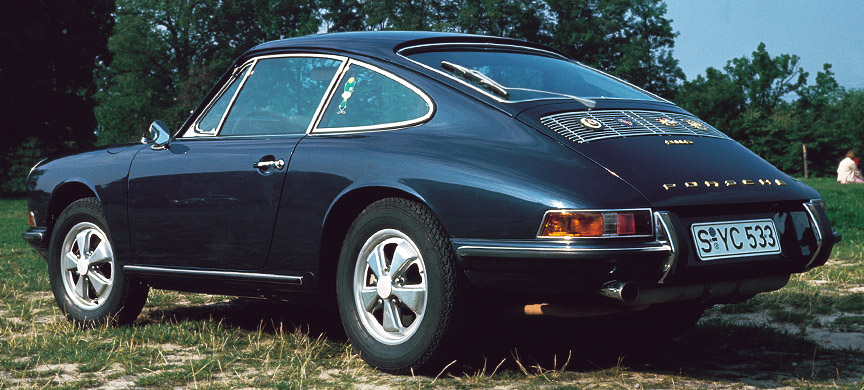


In the beginning of 1967, the new cabriolet with the safety bar, the Targa, was released to markets. The name came from Targa Florio race and was suggested by Harald Wagner, Porsche head of sales.










In summer of 1967 for model year 1968 Porsche started offering a 4-speed sportomatic gearbox in addition to the 5-speed manual. The sportomatic was a manual gearbox that used automatic clutch function and therefore didn’t have the clutch pedal. For smooth take-offs the unit was equipped with hydraulic torque converter used in automatic gearboxes. When it was time to change the gear, a pressure on the gear stick connected an electrical contact, which initiated the vacuum operated actuation of the on/off clutch mechanism. Sportomatic was first available for the 911 and later also offered for the 914/6.
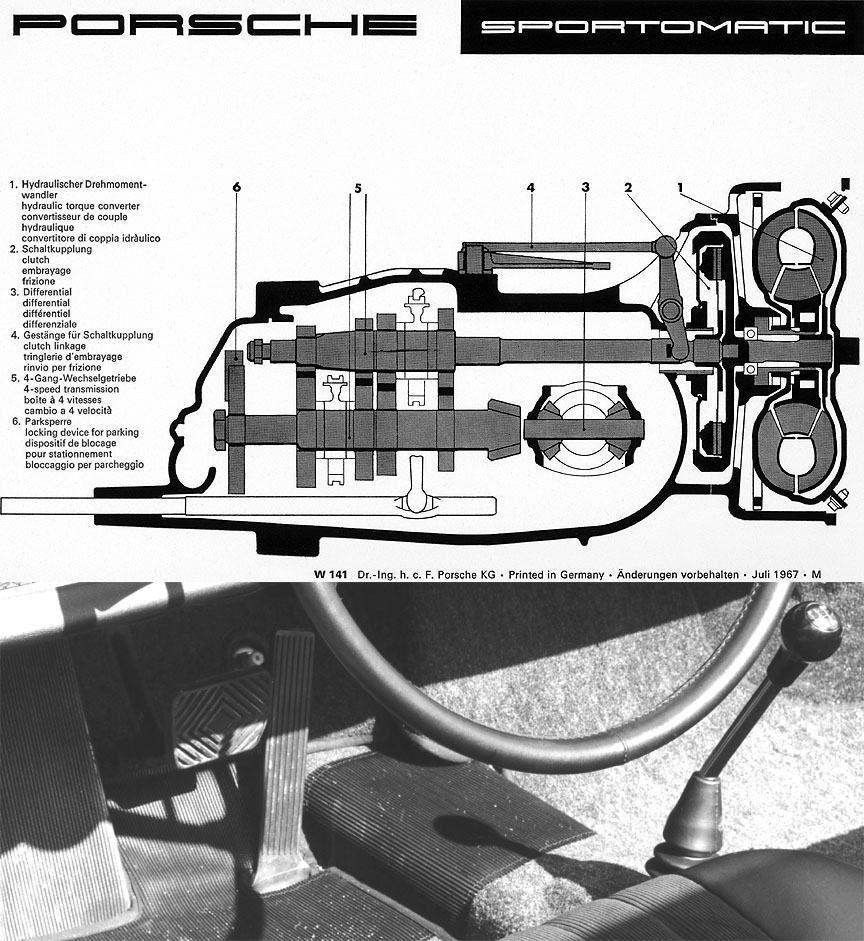
In 1967 factory started building competition versions of the 911. The first such car was the 911 R. It had fiberglass fenders, front lid, rear lid and bumpers. The windscreen was of 4 mm thin glass and side and rear windows were of 2 mm plexiglass. All door and lid hinges were replaced with aluminium ones. The engine was a high power version of the 911 2-litre engine. The first race was on July 23, 1967, the Mugello 500 km and the 911 R scored third after two Porsche 910. A month later a 911 R equipped with the sportomatic gearbox won the 1967 Marathon de la Route 84 hour extreme competiton held on the combined tracks of Nürburgring’s northern and southern loops (28.265 m / 17.567 miles in total). The reason to use sportomatic on a racing car might have been purely for marketing purposes. The event lasted for 4 nights and 3 days. The last two nights were driven in rain and fog, putting the drivers on extraordinary endurance test. 13 cars out of 46 starters managed to finish. Winning Porsche covered 9129 km / 5674 miles. This translates to average speed of 109 kmh / 68 mph.

Following the Marathon de la Route even a more crazier test was on the schedule for the 911 R: 3+ days of flat out full speed on the oval track of Autodromo Monza on October 29, 1967. The men driving the car were Jo Siffert, Dieter Spoerry, Hans Heinrich “Rico” Steinemann, Charles Vogele and Hans Illert. As all of the distance was covered at the top speed, for durability both the 4th and 5th gear were installed with the same ratio to have an extra gear if one fails. The achieved records were as follows:
| Distance | Time | Average mph | Average km/h | |
| 621 miles | 1000 km | 4h 25min | 141 | 226 |
| 839 miles | 1351 km | 6h | 140 | 225 |
| 1000 miles | 1609 km | 7h 7min | 140 | 226 |
| 1599 miles | 2574 km | 12h | 133 | 215 |
| 3106 miles | 5000 km | 23h 33min | 132 | 212 |
| 3166 miles | 5095 km | 24h | 132 | 212 |
| 5000 miles | 8046 km | 37h 54min | 132 | 212 |
| 6213 miles | 10000 km | 47h 34min | 131 | 210 |
| 10000 miles | 16093 km | 76h 31min | 131 | 210 |

Some 911 R were fitted with experimental type 916 4-cam 6-cylinder 2-litre 169 kW engines aswell as with regular 911 S 118 kW (type 901/02) engines if the customer wanted. The typical engine of the 911 R was type 901/22 with 154 kW.
During the model year 1968, the standard 911 was renamed 911 L and it kept the 96 kW engine. 911 L was produced for one model year only. With the introduction of the 911 L, a less powerful 81 kW 911 T was introduced. For the competition use a 911 T Rallye was developed from the 911 S. The reason it was called 911 “T” Rallye, later known as 911 T/R, was due to the fact that Porsche homologated this 911 based on the 911 T data, which was the lightest 911 in production. The T/R was made with 3 different 2-litre engines – in 118, 132 and 154 kW versions.
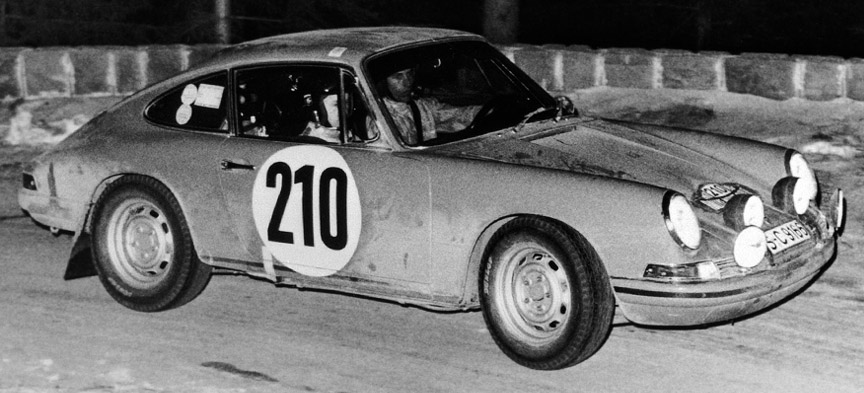

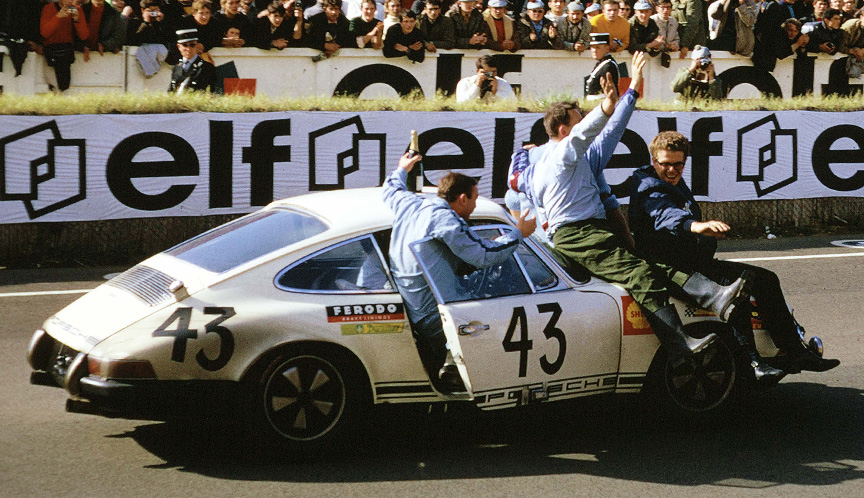
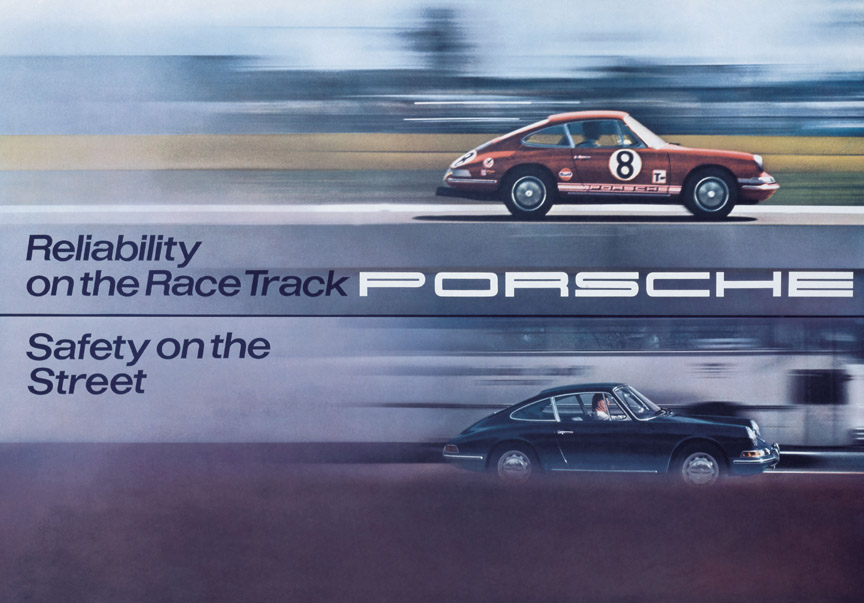



In 1968, starting with the MY1969 some major changes were deployed:
* The wheelbase was extended in order to achieve better handling characteristics. It was extended 57 mm (2.2″) from 2211 to 2268 mm (for comparison, 1963 901 had 2204 mm)
* The Targa is now officially available with real glass rear window (soft window also kept in production)
* Bosch Kugelfischer fuel injection was introduced
* 911 L was replaced by fuel-injected 103 kW 911 E (E stands for Einspritzung, injection in German)
* 911 S got increase to 125 kW thanks to fuel injection
The introduction of fuel injection had become necessary in order to comply with the new Californian emission limit values; however, it also resulted in an increase in performance. The mechanical twin-series injection pump from Bosch was preferred instead of the K-Jetronic, which was later used. Bosch also provided the newly developed capacitive-discharge ignition (HKZ) which was also known as thyristor ignition for the high speed and high performance sports engines. Yet another innovation was the use of sodium-filled exhaust valves, which dissipated the heat better and thus ensured that the engines were full-throttle-resistant. From model year 1969 the Fuchs wheels were also offered in 14″ size as a comfort option (higher tyre profile). Model year 1969 was the last for 912.

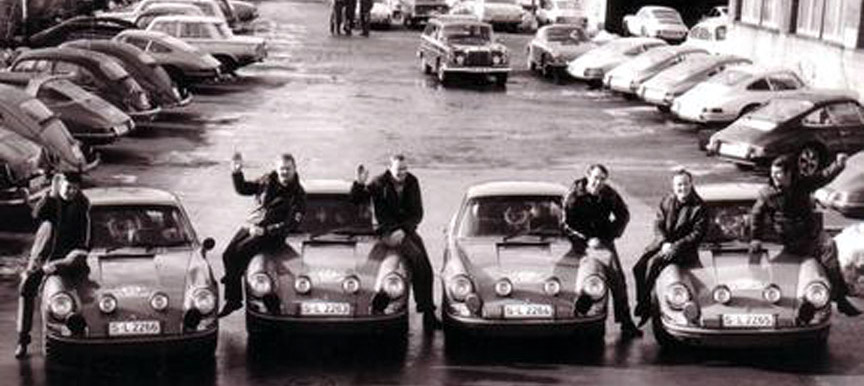
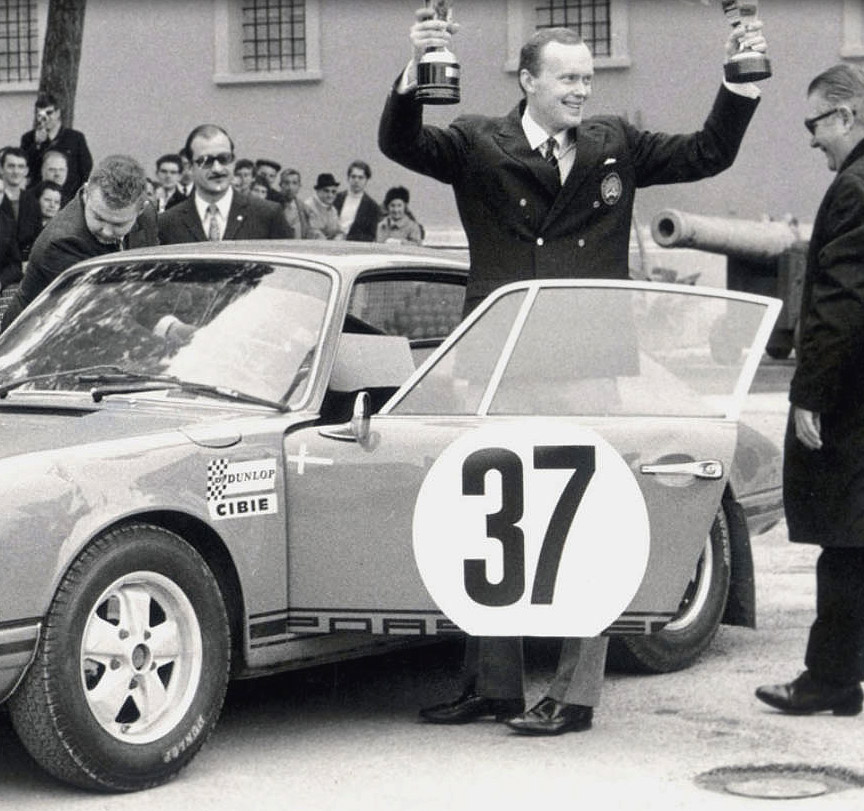

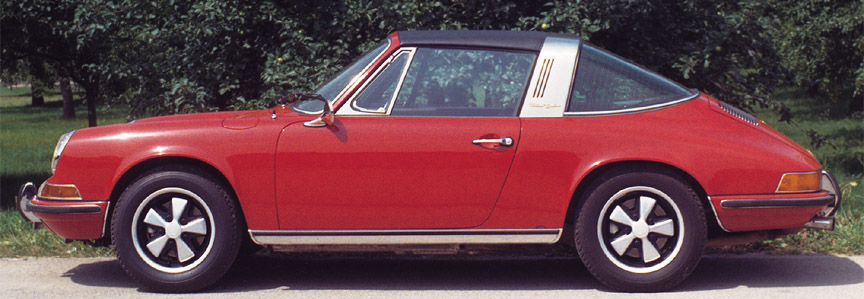
In 1969, for model year 1970, all modifications got 2.2-litre engines. 912 was discontinued. The 2.2 T now had 92 kW (still less than the original car in 1964), the 2.2 E had 114 kW and the 2.2 S had 132 kW. For competition use 911 S “Racing Version” was created. It was later called 911 S/T. It had 2247cc engine, but was called 911 S/T 2.3 to distinguish it from the 2.2-litre 911s. The racing engine developed 169-176 kW.



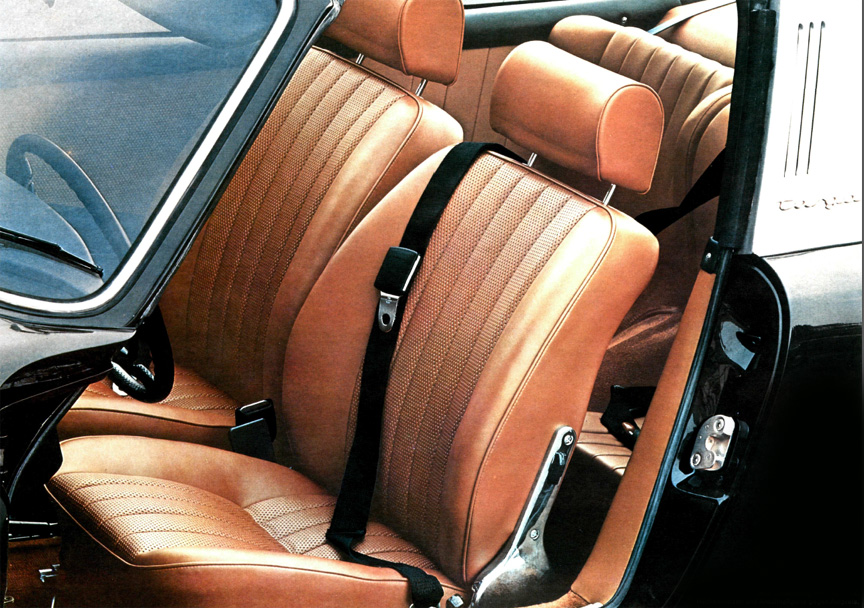

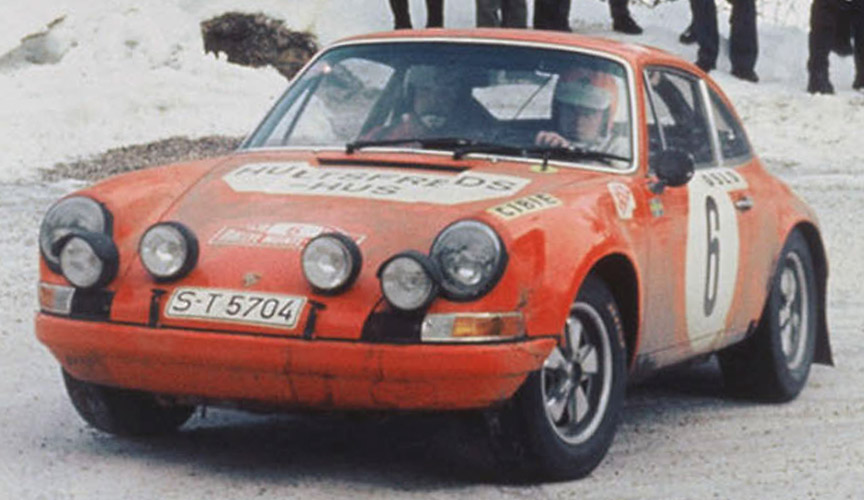
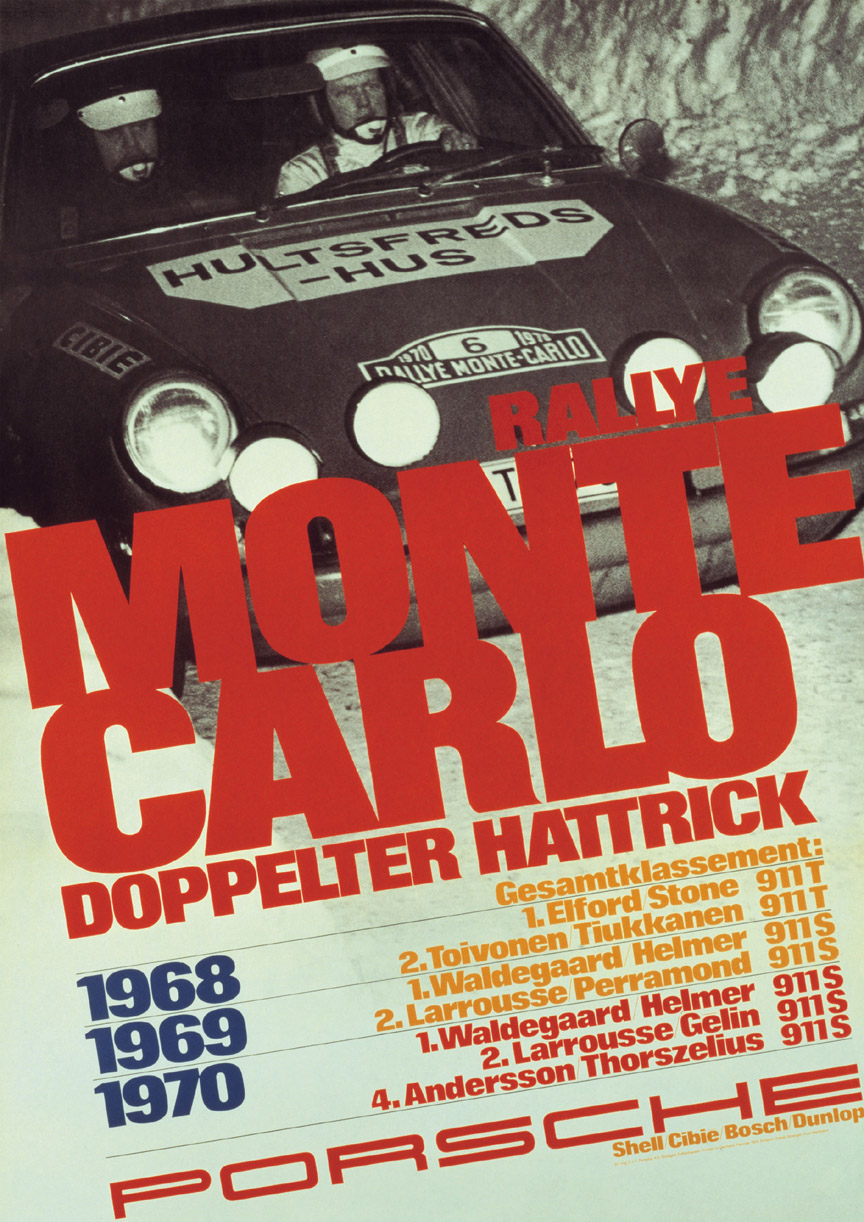

In 1971, for model year 1972, the wheelbase was extended for the third time. The wheelbase on the 901 was initially advertised as 2204 mm, but extended for the production 901 and 911 to 2211 mm, then from MY1969 to 2268 mm and from MY1972 to 2271 mm. For MY1972 the 2.4-litre engines were introduced. In reality these engines are 2.3-litre (2341cc), but Porsche calls them 2.4. The 2.4 T for Europe had carburetor engine with 96 kW. The car was later called 2.4 T/V, where V standed for Vergasser, a carburetor in German. The 2.4 T for USA got Bosch Kugelfischer fuel injection, which has been used in more expensive 911 E and S. The 2.4 T for USA had 103 kW and was later called 2.4 T/E (E for injection). During the model year 1973, the US-version 911 T got Bosch K-Jetronic fuel injection instead of Kugelfischer and this model was later called 911 2.4 T/K (K for K-Jetronic). The peak power stayed unchanged at 103 kW. The 2.4 E had 121 kW and the more sporty 2.4 S had 140 kW. The racing S/T got a 2.5-litre engine. According to the factory specs it had 7+9×15″ wheels, widened wheel arches, 10.000 rpm tachometer, 110 L fuel tank with big tank inlet under the lid, black interior, exterior colour from serial colors of 911 S, cylinders bored to 2492 cm3, racing pistons, cylinder heads with big valves, polished intake and exhaust ports, special suction pipes with Weber carburetors 46 IDA or upon request Bosch fuel injection, racing camshafts, racing exhaust system, competition clutch, transistorized dual ignition system, performance approx. 270 DIN HP at 8000 rpm, max torque value approx. 26.5 mkp at 6300 rpm, all gear sets interchangeable, rear axle 7:31 with limited slip differential, gear lubrication with mounted oil pump.
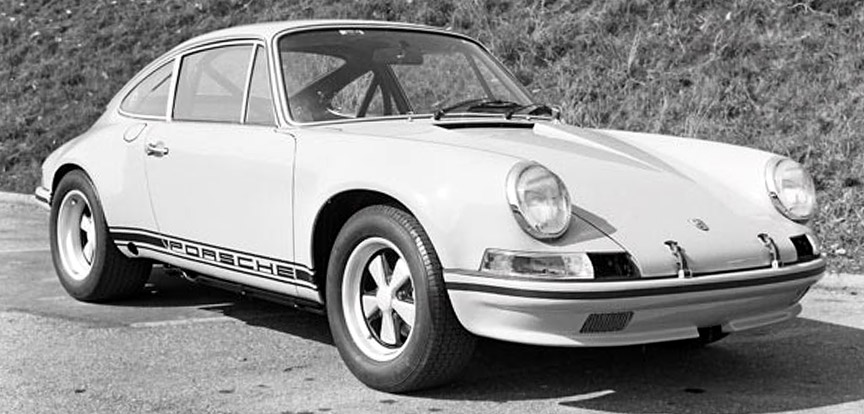

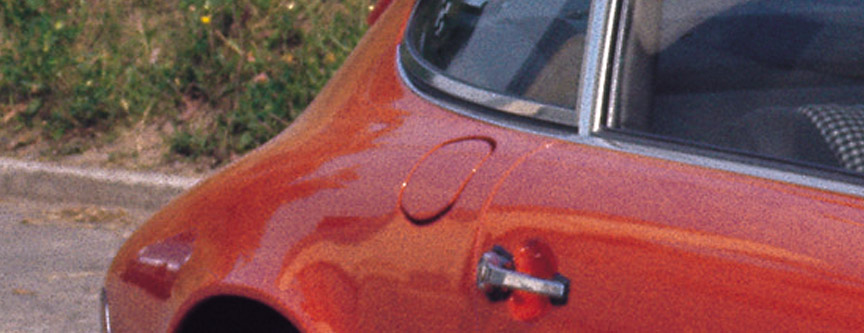
Porsche considered a car with full size rear seats again. There had already been a 356 prototype with extended body and full size rear seats two decades earlier. And the initial 911 prototype had high roofline and 4 fullsize seats. Third attempt was the 911 C20 prototype. It got 350 mm increase in wheelbase compared to the standard 911. It is easy to see from the photo why this car didn’t go into production.
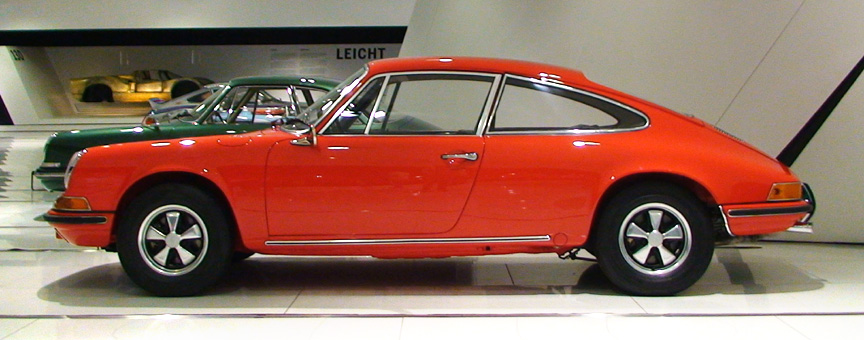

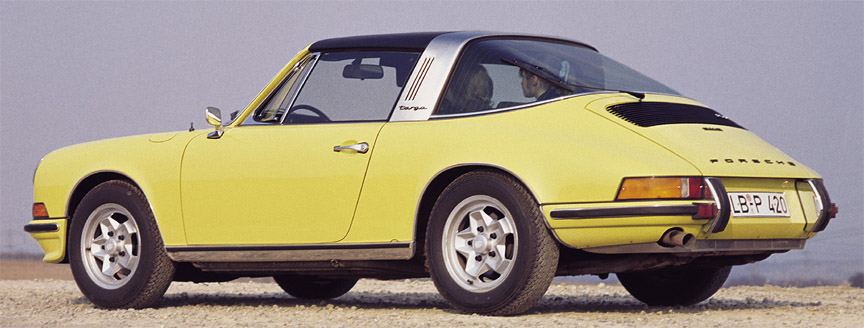
Created for the final production year of the first generation 911, the Carrera RS Lightweight was a special car and is even more so in todays world of heavyweight champions. During the development phase it was called 911 SC (abbrevation later used on a G-model 911). The 911 Carrera RS was developed from the 911 S 2.4 and has two versions. The purest version is the spartan “Lightweight” and then there is the “Touring” which has the RS engine, duck tail and color scheme, but is closer to the “S” in terms of equipment and weight. The original German names for the two versions were “Sport” and “Komfort”. For some reason in English-speaking world the Sport is better known as Lightweight and the Comfort-version is known as Touring-version.
The RS was exhibited first time at the Paris Motor Show on October 5, 1972. The initially scary number of 500 cars were actually reserved already in a few weeks. 1000th RS was completed on April 9, 1973 and around 1500 cars were made in total with only 10-15% of them being the Lightweight models.
The special engine is mated to a long ratio gearbox – top speeds are as follows: 1st gear 37 mph/60 kmh (7200 rpm), 2nd gear 63 mph/102 kmh, 3rd gear 91 mph/147 kmh, 4th gear 123 mph/198 kmh. For 5th gear there are two results available: Automobil Revue’s test in May 1973 showed 242 kmh/150 mph, but in a speed record attempt on the Volkswagen’s Ehra Lessien test track on July 28, 1973 Fritz Huschke von Hanstein managed to achieve even better result – 10 miles from standing with average speed of 160.484 mph / 258.274 kmh. This was average speed from standing start meaning the peak top speed was even a bit higher.






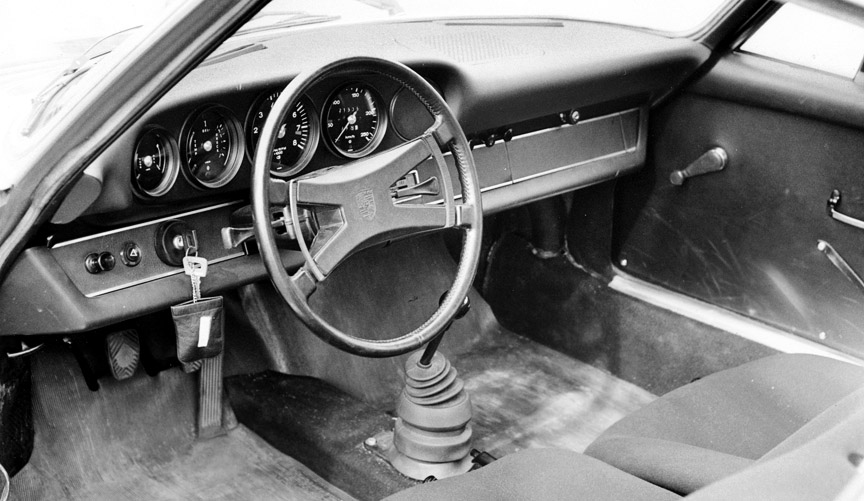

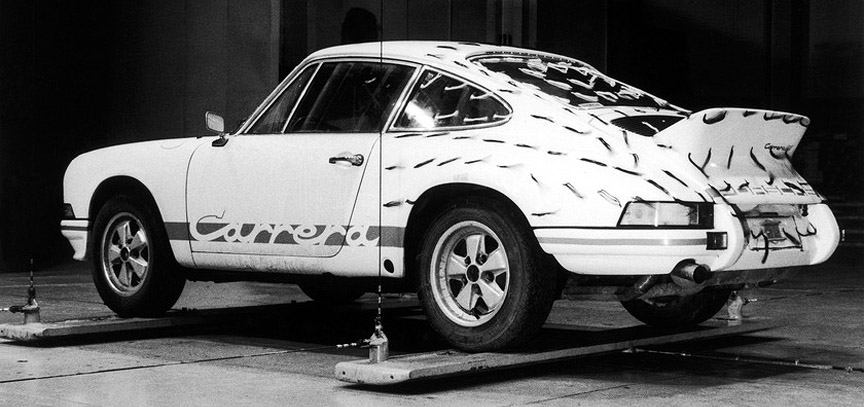

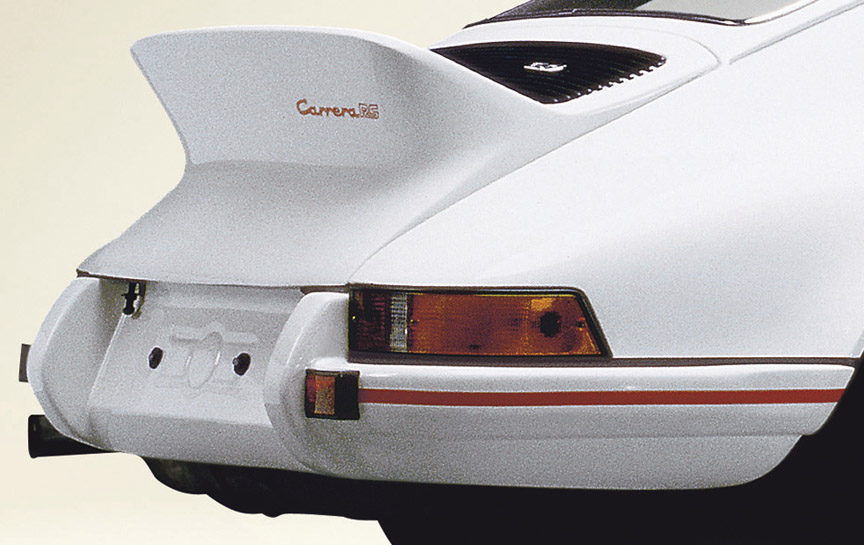



Price comparison in 1973 (Swiss market prices)
| Jaguar E-Type V12 | 39.000 CHF |
| Ferrari Dino 246 GT | 46 300 CHF |
| Porsche 911 S 2.4 | 47.810 CHF |
| Porsche 911 Carrera RS 2.7 Sport (Lightweight) | 48.350 CHF |
| Porsche 911 Carrera RS 2.7 Komfort (Touring) | 50.780 CHF |
| Lamborghini Urraco P 250 | 52.500 CHF |
| Maserati Merak | 55.600 CHF |
For competition use Porsche created 911 Carrera RSR 2.8 and 3.0 widebody racers. The RSR weighed around 900 kg / 1984 lb. The ultra-wide body was two years later used on the series production car, the 911 Turbo. The RSR was equipped with the 15″ Fuchs wheels in the sizes of 9″ at the front (with 230 mm tyres) and 11″ at the back (with 260 mm tyres).
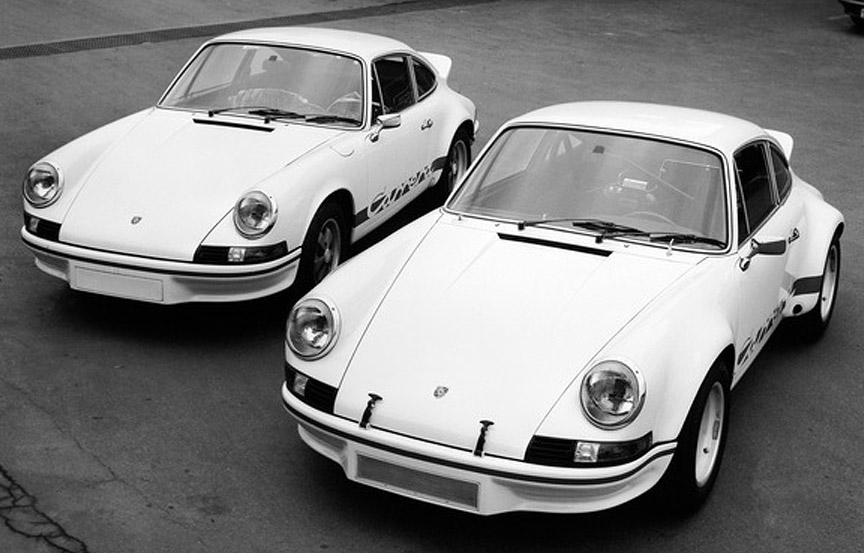

The first race for the 911 Carrera RSR 2.8 was the Daytona 24 hour race on February 3-4, 1973. The Brumos team 911 RSR #59 was driven to victory by Peter Gregg and Hurley Haywood.
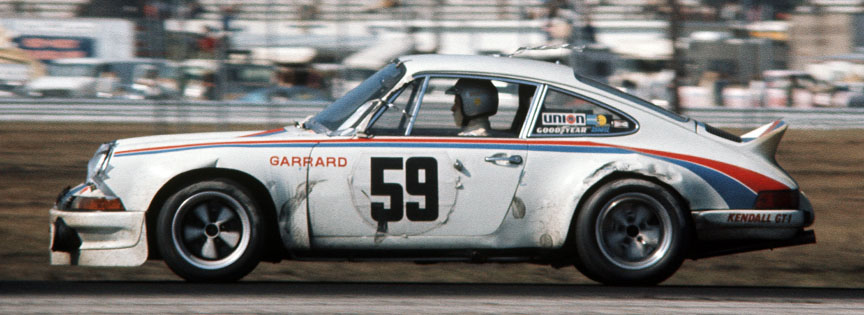

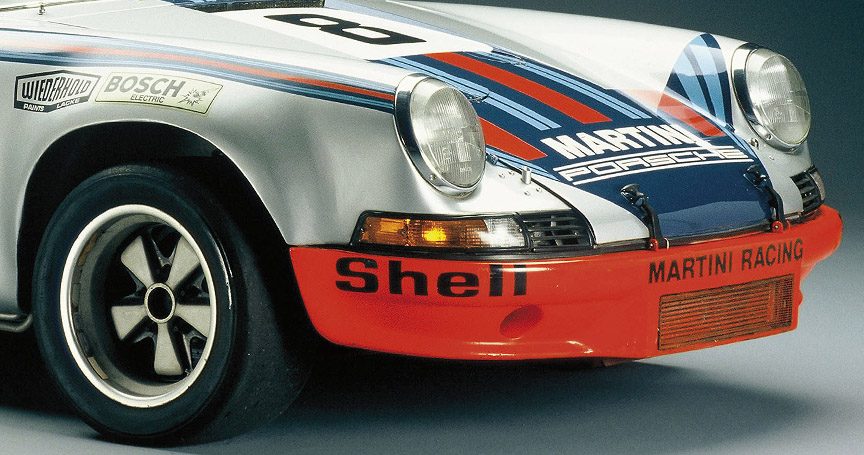



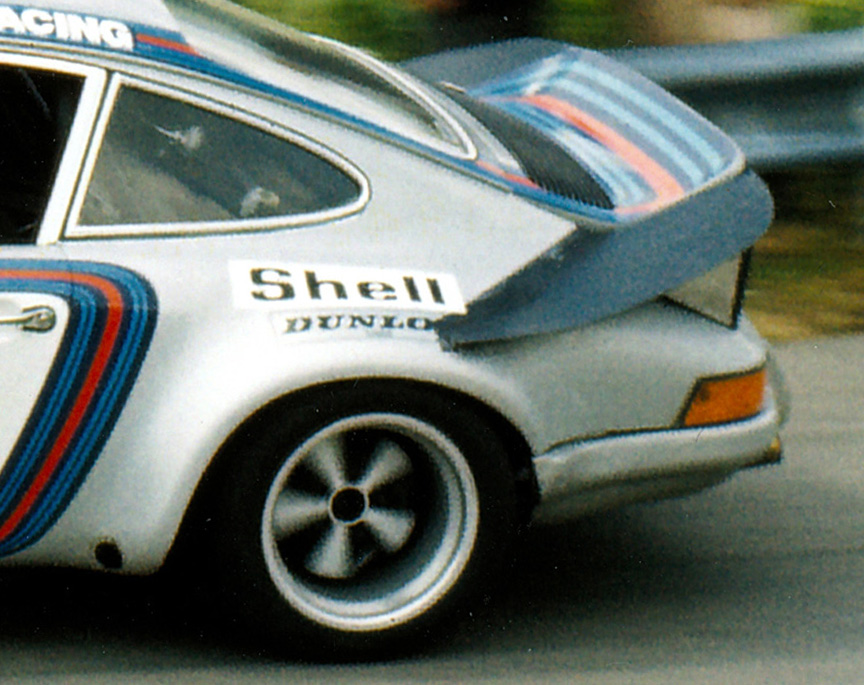
The RSR 2.8 was developed into a RSR 3.0 and entered into the 1973 Le Mans 24H race. The car had a distinctive exterior feature – an integrated rear spoiler that started already on the rear wings. The car had 12″ wide rear wheels, braking system from the 917 and rear auxiliary springs instead of the torsion bars. The 243 kW racer weighed in at a nice 890 kg/1962 lb.

With almost a decade in production, the time was over for the first generation 911 and in 1973 the second generation, later known as G-model, was introduced.


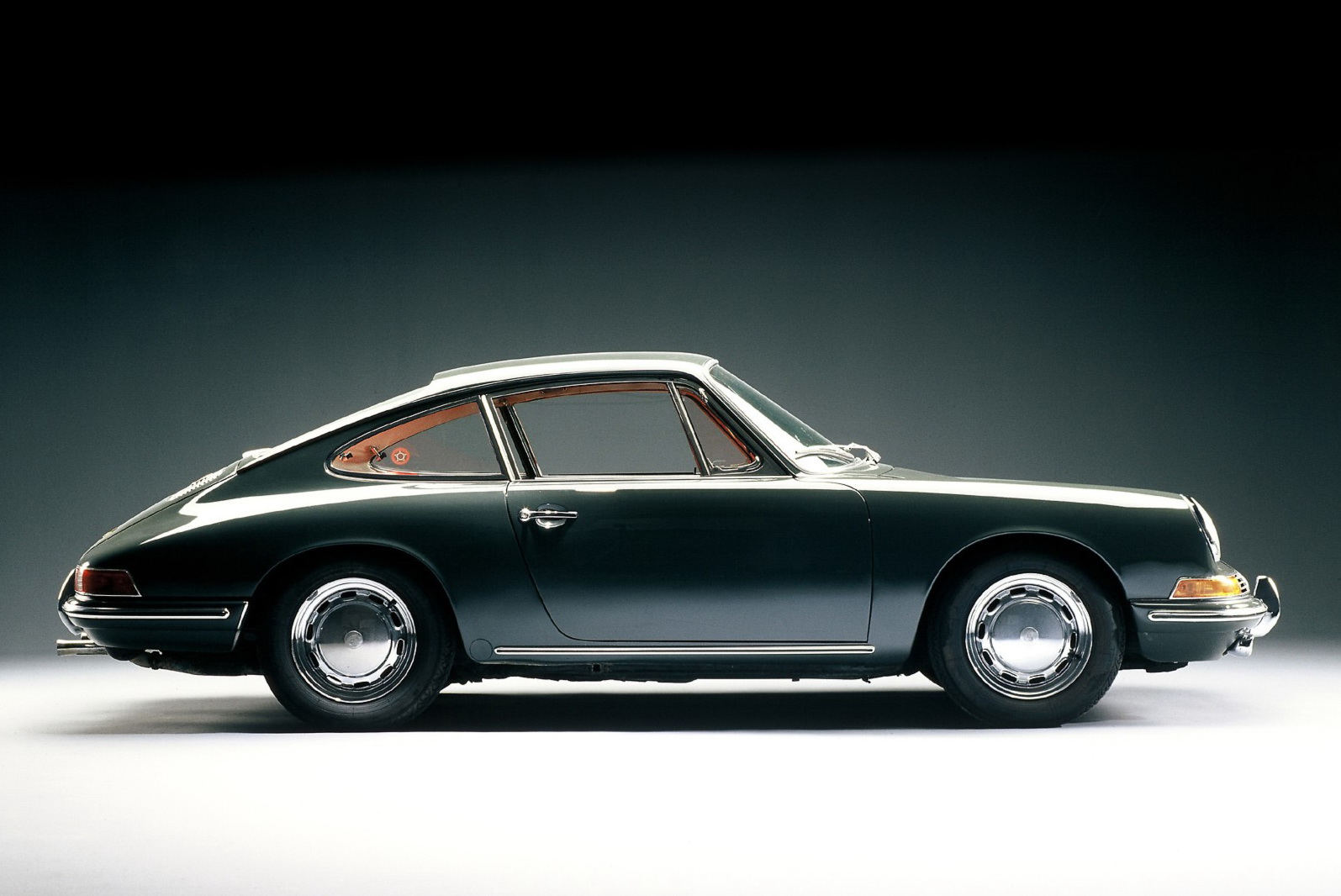
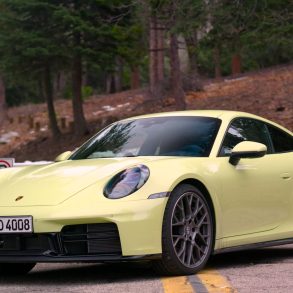
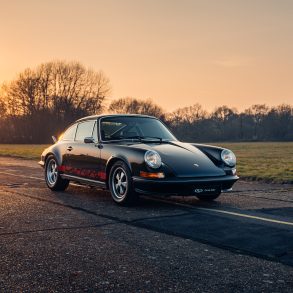

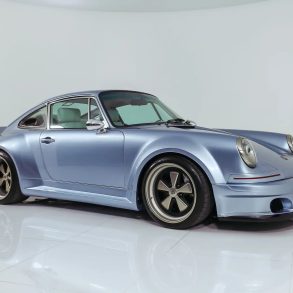





Great writing and good information on the 911.
Please note that German number plates with numbers starting with a zero are not assigned to a specific car but can be freely transferred for short tine use like dealer plates.
Therefore S-04xxx is of no relevance for a specific 911.
0